This page covers the available CNA classes in North Dakota listed by city. If you are looking forward to working in the healthcare field without an expensive education cost, then one of the best options would be to take certified nursing assistant classes. The cost of nursing assistant training programs is cheaper than most other medical courses and they are also of shorter duration. The possibility of finding employment after finishing the program is also high as there is a great demand for nursing assistants not just in nursing facilities but in hospitals as well. The number of people seeking the services of a nursing aide is greatly increasing which means that taking a class today could assure you of a job opportunity after you finish.
CNA Classes in North Dakota By City
| Bismarck Bowman Carrington Cavalier Devils Lake Dickinson Elgin Fargo Glen Ullin Grafton |
Grand Forks Hankinson Hettinger Jamestown Langdon Mayville Minot Rugby Valley City Williston |
 Nursing assistants are involved in a large number of tasks such as infection control, safety and emergency procedures, promoting resident rights and independence, basic patient care, and communication and interpersonal skills.
Nursing assistants are involved in a large number of tasks such as infection control, safety and emergency procedures, promoting resident rights and independence, basic patient care, and communication and interpersonal skills.
Aside from this, they are also required to take their patient’s vital signs; assist in their feeding, bathing, and grooming; and answer their patient’s call lights. They also document their patient’s health progress and take down reactions to particular medications and food.
All of this information must be delivered to their medical superiors such as a registered nurse or a licensed physician. Nursing assistants also need to learn about medical equipment and terminology in order to deliver their services efficiently. They also inform patient’s regarding the effects and side-effects of particular procedures and medications on their body.
There are various facilities and institutions which offer nursing aide training in the state of North Dakota and they are also very affordable compared to other states. The state requires a minimum of 75 hours of training which shall include both classroom and practical training in a licensed nursing facility.
There are several colleges which offer CNA training such as University of North Dakota Lake Region which lasts for about two weeks; Fargo Adult Learning Center which offers a three-week program for $530 with a practicum at the Bethany Homes; North Dakota College of Science and Technology for $200. Aside from these, there are nurse aide training programs offered in Bismarck Public School, MedCenter One, Golden Acres Manor, and St. Benedict’s Health Center. Some of these nursing facilities can offer you free training while you work in their facility.
After finishing the course, the student will then be eligible to sit for the state competency exam. The state requires a state and federal criminal background check, physical exam, TB test result, proof of immunizations, and a high school diploma may be required by some schools. The state competency exam is composed of two portions – the written exam and the skills or practical test. The applicant should successfully pass both tests in order to gain a certification and be allowed to work as a nursing assistant. You can visit this link to read more about the current nursing assistant certification requirements in North Dakota.
As of recent surveys, there are about 10,000 employed nursing assistants in the state and there is a continuing rise in the demand for this type of work. The average annual salary for a CNA in North Dakota is about $ $24,000 which may go higher or lower depending on one’s location, length of experience, and type of employment. Many CNA’s in the state gain experience in the health care field while studying to become a registered nurse and receive a high paying career.
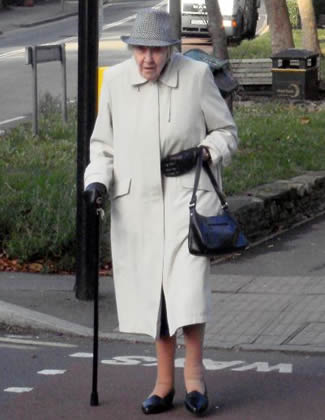 After finishing the training program, one can now apply for the state examinations. The test includes both an oral or written exam as well as a demonstration of skills. One is allowed to take the exam three times and if he still fails the last try, he would be required to retake the training. The results of the exam will be published within 30 days from the taking of the test.
After finishing the training program, one can now apply for the state examinations. The test includes both an oral or written exam as well as a demonstration of skills. One is allowed to take the exam three times and if he still fails the last try, he would be required to retake the training. The results of the exam will be published within 30 days from the taking of the test.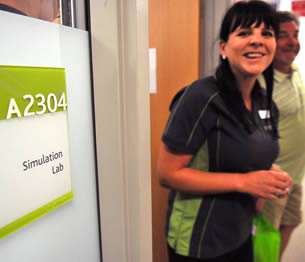 In some courses, you will have to undergo physical examinations to determine that you are physically capable of handling the patients. You may also have to pass the criminal background checks before you are accepted. The checks are done in both federal and state levels. If you were a healthcare professional and had records of abuse, neglect, or theft, you may not be accepted and be allowed to work as a nurse aide.
In some courses, you will have to undergo physical examinations to determine that you are physically capable of handling the patients. You may also have to pass the criminal background checks before you are accepted. The checks are done in both federal and state levels. If you were a healthcare professional and had records of abuse, neglect, or theft, you may not be accepted and be allowed to work as a nurse aide.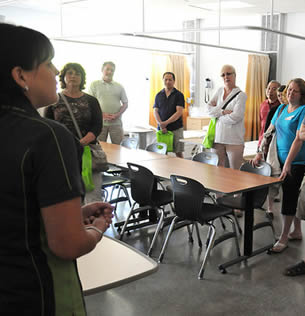 The thing that adds to is practicality is that the Department of Health allows an individual to be hired by a licensed nursing facility even when his training is still ongoing. Individuals that are enrolled in a healthcare facility like a hospital or a nursing home can also do so. Since their training is still not complete, they are only allowed to perform nursing and nursing-related procedures that were already taught in the program, or while being under the direct supervision of a qualified instructor. These individuals must be certified within 4 months from the start of their work.
The thing that adds to is practicality is that the Department of Health allows an individual to be hired by a licensed nursing facility even when his training is still ongoing. Individuals that are enrolled in a healthcare facility like a hospital or a nursing home can also do so. Since their training is still not complete, they are only allowed to perform nursing and nursing-related procedures that were already taught in the program, or while being under the direct supervision of a qualified instructor. These individuals must be certified within 4 months from the start of their work.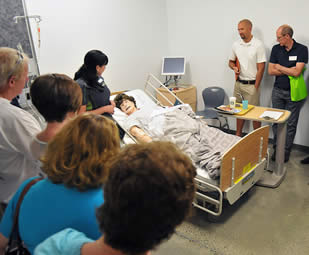 Before you can take the exam, you will have to apply for it and one of its requirements is a certificate of proof that you were able to complete the necessary training course that was approved by the state of North Dakota. Due to the high demand for this profession, you can find that these programs are offered by community technical colleges, private training centers, hospitals, nursing homes, and even online. State-approved programs are required to offer no less than 75 hours of training, which can be completed within 1 to 2 months.
Before you can take the exam, you will have to apply for it and one of its requirements is a certificate of proof that you were able to complete the necessary training course that was approved by the state of North Dakota. Due to the high demand for this profession, you can find that these programs are offered by community technical colleges, private training centers, hospitals, nursing homes, and even online. State-approved programs are required to offer no less than 75 hours of training, which can be completed within 1 to 2 months. According to the law, the only way for you to truly become a nursing assistant is to pass the Federal’s training and testing regulations. By completing a state-approved training program, you will become eligible to apply for the competency evaluation exam, which is officially known as the National Nurse Aide Assessment Program. This exam will test the nursing assistant candidate in both knowledge and competency in performing nursing and nursing-related tasks.
According to the law, the only way for you to truly become a nursing assistant is to pass the Federal’s training and testing regulations. By completing a state-approved training program, you will become eligible to apply for the competency evaluation exam, which is officially known as the National Nurse Aide Assessment Program. This exam will test the nursing assistant candidate in both knowledge and competency in performing nursing and nursing-related tasks.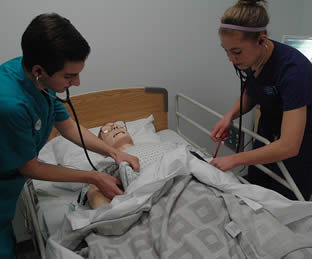 One of the first requirements is that you must complete a CNA training program. Another is that you must also pass the background check to see if you have any criminal records. Once you have met all the requirements, you can then try to take on the license exams.
One of the first requirements is that you must complete a CNA training program. Another is that you must also pass the background check to see if you have any criminal records. Once you have met all the requirements, you can then try to take on the license exams.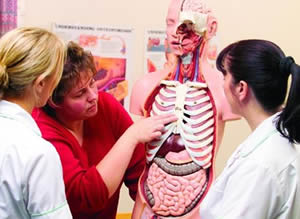 A nursing aide or a nurse aide/nursing assistant works under the supervision of a registered nurse and the medical staff. Nursing aides help the patients by providing routine care such as vital signs taking, performing bed baths, help in feeding, assist in other daily activities like ambulation, and tend to their other health needs so long as the task involved is within the scope of what a nursing aide can do.
A nursing aide or a nurse aide/nursing assistant works under the supervision of a registered nurse and the medical staff. Nursing aides help the patients by providing routine care such as vital signs taking, performing bed baths, help in feeding, assist in other daily activities like ambulation, and tend to their other health needs so long as the task involved is within the scope of what a nursing aide can do.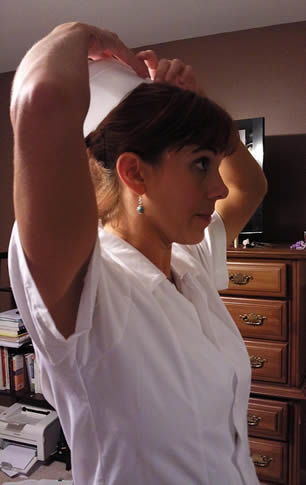 Taking the competency evaluation exam is one of the ways for you to start working as a nursing assistant in any state. The other option is by applying for reciprocity, which is only available for nursing assistants who are already on a Nurse Aide Registry and simply want to transfer and work in a different state.
Taking the competency evaluation exam is one of the ways for you to start working as a nursing assistant in any state. The other option is by applying for reciprocity, which is only available for nursing assistants who are already on a Nurse Aide Registry and simply want to transfer and work in a different state.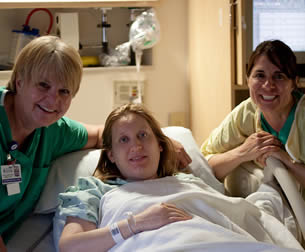 Because of the high demand for the profession, aspiring nursing aides will have no problems looking for a suitable training program near their area to enroll in. On average, the training programs in North Dakota take about 5 to 8 weeks to complete. For those who are hired as a nursing aide by a licensed healthcare facility prior to enrolling will not be charged with any of the training fees. These expenses will be shouldered by the employer.
Because of the high demand for the profession, aspiring nursing aides will have no problems looking for a suitable training program near their area to enroll in. On average, the training programs in North Dakota take about 5 to 8 weeks to complete. For those who are hired as a nursing aide by a licensed healthcare facility prior to enrolling will not be charged with any of the training fees. These expenses will be shouldered by the employer.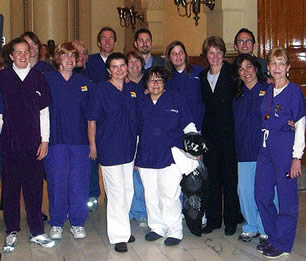 For example, with the increase in the demand for nursing assistant, also comes an increase in the demand for training facilities that will properly educate and train nursing assistant trainees. Training facilities that wish to offer CNA training are required by the DOH to first be certified before they take on any students. A training facility will have to be checked if it meets the state’s standards before it can get certified. The checking is done after the DOH receives the completed application form (http://www.ndhealth.gov/hf/PDF_files/Nurse_Aide_Training_Program_Application_for_Approval_-_10-01-09.pdf).
For example, with the increase in the demand for nursing assistant, also comes an increase in the demand for training facilities that will properly educate and train nursing assistant trainees. Training facilities that wish to offer CNA training are required by the DOH to first be certified before they take on any students. A training facility will have to be checked if it meets the state’s standards before it can get certified. The checking is done after the DOH receives the completed application form (http://www.ndhealth.gov/hf/PDF_files/Nurse_Aide_Training_Program_Application_for_Approval_-_10-01-09.pdf). To ensure that the students will receive the proper education and training, the Department of Health has standardized a training program that must be followed by a program in order to be certified. The DOH has set several manuals that must be taught during the course of the program, although each program may rearrange the order of which they will teach each manual. If you want to certify a training program, you can download a copy of the application forms from this link: http://www.ndhealth.gov/hf/PDF_files/Nurse_Aide_Training_Program_Application_for_Approval_-_10-01-09.pdf.
To ensure that the students will receive the proper education and training, the Department of Health has standardized a training program that must be followed by a program in order to be certified. The DOH has set several manuals that must be taught during the course of the program, although each program may rearrange the order of which they will teach each manual. If you want to certify a training program, you can download a copy of the application forms from this link: http://www.ndhealth.gov/hf/PDF_files/Nurse_Aide_Training_Program_Application_for_Approval_-_10-01-09.pdf.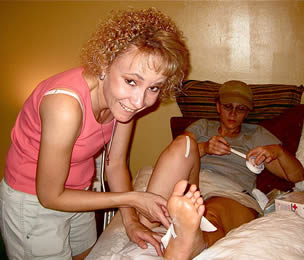 In order to complete a training program, you must be able to meet the required 75 hours of training and pass the final exams. Your training will consist of lectures, laboratory work, and clinical training. During that time, you will be guided and supervised by qualified instructors. You will cover topics such as communication skills, patient’s rights and independence, safety and emergency procedures, basic care, and different medical terms.
In order to complete a training program, you must be able to meet the required 75 hours of training and pass the final exams. Your training will consist of lectures, laboratory work, and clinical training. During that time, you will be guided and supervised by qualified instructors. You will cover topics such as communication skills, patient’s rights and independence, safety and emergency procedures, basic care, and different medical terms. In order to fully work as a nurse aide, you must be on the state’s Nurse Aide Registry. The registry is a listing of all the individuals who were able to complete the approved competency exam and have given the registry the necessary documents and information. You must also be able to pass a routine background check that you will undergo when applying for the state exams.
In order to fully work as a nurse aide, you must be on the state’s Nurse Aide Registry. The registry is a listing of all the individuals who were able to complete the approved competency exam and have given the registry the necessary documents and information. You must also be able to pass a routine background check that you will undergo when applying for the state exams. The certification process begins with you enrolling in a state-certified training program. These programs are required to offer 75 hours of training, which can take about 5 to 8 weeks to complete. While enrolled, you will be spending your time in classrooms, laboratories, and in an actual clinical setting taking care of patients. The last one is particularly true for those who are enrolled in a program that is offered by a licensed healthcare facility.
The certification process begins with you enrolling in a state-certified training program. These programs are required to offer 75 hours of training, which can take about 5 to 8 weeks to complete. While enrolled, you will be spending your time in classrooms, laboratories, and in an actual clinical setting taking care of patients. The last one is particularly true for those who are enrolled in a program that is offered by a licensed healthcare facility.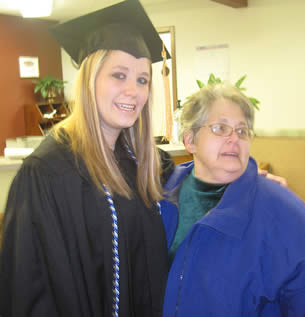 The first step to becoming a CNA in the state of North Dakota is to complete a CNA training program. While enrolled in the training program, you will be spending a few hours on both lectures and clinical experience. If you complete the program, you can then try to apply for the license exams.
The first step to becoming a CNA in the state of North Dakota is to complete a CNA training program. While enrolled in the training program, you will be spending a few hours on both lectures and clinical experience. If you complete the program, you can then try to apply for the license exams.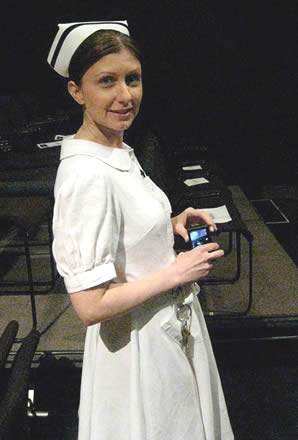 It is highly important that before you handle a resident as a nursing aide is that you must have the proper training. The Nursing Home Reform Act was created to ensure that the quality of care that the residents/patients receive from nursing aides is top quality. That is why you must enroll in a state-certified training class to gain the proper knowledge and skills. You will find that these programs are offered by a variety of training facilities.
It is highly important that before you handle a resident as a nursing aide is that you must have the proper training. The Nursing Home Reform Act was created to ensure that the quality of care that the residents/patients receive from nursing aides is top quality. That is why you must enroll in a state-certified training class to gain the proper knowledge and skills. You will find that these programs are offered by a variety of training facilities.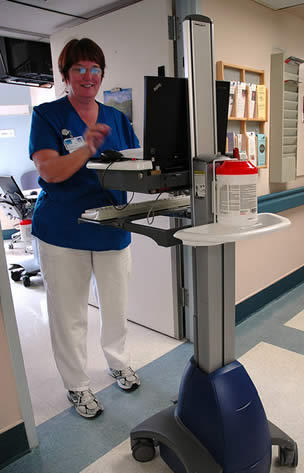 Becoming a nursing assistant in the state of North Dakota is one of the best ways for you to enter the medical field. This type of job is continuously in demand because of the high pay rate of nurses. If you want to proceed to a higher degree in the medical industry, you use this as a great stepping stone.
Becoming a nursing assistant in the state of North Dakota is one of the best ways for you to enter the medical field. This type of job is continuously in demand because of the high pay rate of nurses. If you want to proceed to a higher degree in the medical industry, you use this as a great stepping stone.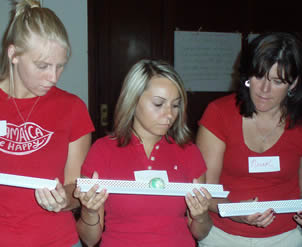 To become a nursing assistant, you will have to enroll in a state-approved training program. An approved CNA program will offer 75 hours of training, with an additional of 16 hours allotted for clinical practice. The students are only required to have a minimum of 16 classroom hours before they are allowed to go on duty in the clinical area. The topics covered during training will cover a wide range of subject like infection control, mental health, basic, care communication skills, and emergency procedures.
To become a nursing assistant, you will have to enroll in a state-approved training program. An approved CNA program will offer 75 hours of training, with an additional of 16 hours allotted for clinical practice. The students are only required to have a minimum of 16 classroom hours before they are allowed to go on duty in the clinical area. The topics covered during training will cover a wide range of subject like infection control, mental health, basic, care communication skills, and emergency procedures.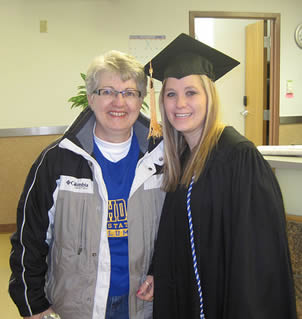 Taking the National Nurse Aide Assessment Program or NNAAP is the only way for you to get a CNA license. A license is a requirement to be able to work long-term in a nursing facility as a nursing aide. For the state of North Dakota, the exams are conducted by Pearson VUE at approved testing centers. Before one is allowed to take, one must apply for it after completing a state-approved training class.
Taking the National Nurse Aide Assessment Program or NNAAP is the only way for you to get a CNA license. A license is a requirement to be able to work long-term in a nursing facility as a nursing aide. For the state of North Dakota, the exams are conducted by Pearson VUE at approved testing centers. Before one is allowed to take, one must apply for it after completing a state-approved training class.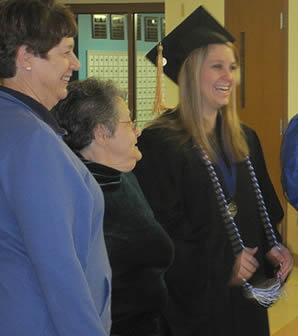 CNA courses in the state are generally offered by community colleges, technical schools, private training centers, nursing homes, and hospitals. A state-approved course must offer a minimum of 75 hours of training, which will be divided into lectures, laboratory works, and clinical practice. Subjects such as infection control, mental health, rehabilitation, personal care, communication skills, and medical terms will be taught in the courses.
CNA courses in the state are generally offered by community colleges, technical schools, private training centers, nursing homes, and hospitals. A state-approved course must offer a minimum of 75 hours of training, which will be divided into lectures, laboratory works, and clinical practice. Subjects such as infection control, mental health, rehabilitation, personal care, communication skills, and medical terms will be taught in the courses.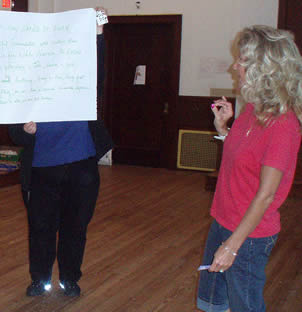 The Nurse Home Reform Act was created back in 1987 to improve the quality of care that the residents in a long-term care facility receive. This now requires aspiring nursing aides to get certified if they wish to work in a nursing home or facility.
The Nurse Home Reform Act was created back in 1987 to improve the quality of care that the residents in a long-term care facility receive. This now requires aspiring nursing aides to get certified if they wish to work in a nursing home or facility.